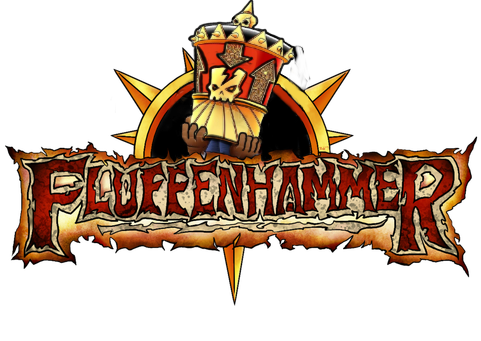The Treadmill
What we classify as “Oldhammer”* was a place of punk design and a “anything goes” mentality. It ate up niche areas and mined them for inspiration until the lore-ore ran dry. We saw anything from Dune to Star Trek to Moorcock to fairy tales being dug into, creating and shaping both the 40k and Old World, which, by extension, can be seen today in AoS. The Regiments of Renown for example took in anything and everything ranging from famous hollywood classics to Scandinavian fantasy, whilst Rogue Trader brought things we would not not see again until very recently, the Genestealer Cults and Ambulls for example.
Games Workshop has evolved over the years from that punk mentality to a more corporate space in the world over the last 40 years, and have staked their claim in a model of armybooks releasing and rereleasing over editions as they pass by. It’s easy to mourn the loss of those early years, that unbridled and freewheeling creativity, as this model only allows to make minis for what rules exist for, rather than making models to then design rules for.
However, it seems apparent that this is something the design studio pushes back against over the decades, and recently, we can see something of that scattergun approach make some serious ground in the pushes. The 1990s, when the armybook treadmill truly began, saw the Regiments of Renown make a strong comeback, and over the last five years we have seen Squats, Zoats, Eldar Harlequins and even Necromunda lay siege to your hobby wallet, and we we look back over the last decade, we can add yet more with the Genestealer Cults. As much I’m not a fan of them, I do applaud the studio for attempting to recapture that First Orc Feel with the Kruelboyz. Specialist Games have attempted to find niches with Dreadfleet (old I know) various boxed games, and you can feel that creativity trying to forge new paths.
Yet, the locked feel of the armybooks is inevitable. To sell the product, it had to be attached to either an existing force or had to be alongside a full new range (see the Time of the Tomb Kings). It saddens me to say that not everything worked, and those that didn’t were left by the wayside as the time continuously crept into the future.
Things had changed by the time the millenium turned, no longer could armies be a hodge podge of ideas, long gone were the days of the Arse Cannon, or the multi-page Shokk Attack Gun rules. Everything had to be simplified and condensed in order to sell, though occasional experiments were tried in the 2000s.
The recent Imperial Guard** codex is what led me on this thought path, with it’s “what you see is what you get” built in on a very conceptal level. In the 80s, there was a standard look to the guard, metal bodies with plastic arms and guns, whilst in the 90s, the Guard exploded into multiple units and worlds, creating a fun looking force with a whole character of it’s own. During the early to mid 2000s, the Guard was packed to the brim with concepts and names for models that did not exist, allowing players to build away and convert to their hearts content. the 2010’s cut this right back. If it wasn’t produced, it was not in there. The armybook lock took place, and whilst Forge World does allow further exploration, the guard were standardised, and their wasn’t much you could do.
The reason is obvious: third part manufacturers. As the 2010s came to a close, more and more companies were producing minis to proxy ideas and concepts from earlier books, and as all companies must unfortunately do, the IP had to be protected. So in came the lock.
Whilst this happened, though, the studio did push. Look at the Nerglings on bases, the terminator with the face of a fly or the scorched heretic the Sisters of Battle cart about. These are all parts of creativity that made people fall in love in the 80s, it’s silly and fun but constrained to the plastic ranges, but it can not move from there.
Then it starts to shift. Necromunda is a breeding ground for it, with strange old miniatures and names making reappearances, concepts returning after many years in the abyss, and the rules are written for the mini, as they were back way back when
Whilst the Big Two Games are still very much Armybook locked, there is some freedom there to convert and proxy those conversions for the rules as set. Forge World does everything in resin as that allows more freedom for creativity of the designers, whilst the plastic multipart kits can be cannibilised and create more freedom for the buyer. There’s never been a point where I feel where it’s balanced perfectly, but it's not bad at all at the moment. The 2000s plastics were the best for conversions as far as I can speak, but the posing and proportions could be way off at times, yet the plastics we have seen over the last decade feel like they can have that detail and posing of the metal minis of the turn of the millenium, but they are locked and have a harder time being custom fodder. it’s a catch-22, much like the armybook lock that causes these design choices
I hope this has been some food for thought, as I’m currently overdosed on cold meds, and I’m unsure if these are actually my fingers,
Until next time, I remain
Adam
*Your timeframe may vary. Damn whippersnappers calling 4th Ed WHFB old.
**I ain’t calling them Astra Millitarium

